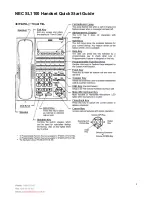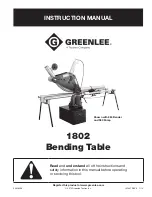
Refrigeration Service Procedures
122
5. The suction pressure gauge should be
indicating 12 to 20 psig (83 to 138 kPa) gauge
pressure.
6. Under these conditions, the ball in the receiver
tank sight glass should be floating. If there is
no indication of refrigerant in the receiver tank
sight glass, the unit is low on refrigerant.
Testing the Refrigerant Charge with
a Loaded Box (Quick Check)
1. Install a gauge manifold (optional).
2. Run the unit on the Cool cycle.
3. Cover at least three quarters of the condenser
to drive any excess refrigerant from the
condenser into the receiver tank. Do not cover
the condenser for more than three minutes.
4. As the head pressure is rising, check the
receiver tank sight glass. The ball should be
floating. If there is no indication of refrigerant
in the receiver tank sight glass, the unit may
be low on refrigerant. Perform a Controlled
Check.
NOTE: If the ball floats, there is sufficient
refrigerant in the unit for that load at that
particular box temperature. This test does
not determine if the unit contains a full
charge of refrigerant.
Checking Compressor Oil
The compressor oil should be checked when there
is evidence of oil loss (oil leaks) or when
components in the refrigeration system have been
removed for service or replacement. The oil level
in the compressor oil sight glass should be 1/4 to
3/4 full.
To check compressor oil level with an ambient air
temperature above 50 F (10 C):
Install a gauge manifold.
Operate the unit on high speed cool with a 10 psig
(69 kPa) minimum suction pressure and 185 psig
(1275 kPa) minimum discharge pressure for 15
minutes or more.
After the unit has maintained the above conditions
for 15 minutes, observe the oil level. The oil
should be 1/4 to 3/4 up in the sight glass.
To check compressor oil level with an ambient air
temperature below 50 F (10 C):
Run the unit through a complete Defrost cycle.
After completing the Defrost cycle, run the unit
on Cool for ten minutes. Observe the oil level.
The oil should be 1/4 to 3/4 up in the sight glass.
If the evaporator temperature is above 32 F (0 C),
it will be necessary to force defrost. To force
defrost, use the relay board test.
If the box is empty, you can run the unit on the
Heat cycle instead of the Defrost cycle.
NOTE: Use refrigeration compressor oil ONLY.
R-404A systems use a special Ester oil
(P/N 203-516). Required for Scroll compressors.
Oil can be added to the compressor through the
Schrader valve on the throttling valve while the
unit is running. Take precautions to prevent
contaminants from entering the system while
adding oil. Also see “Scroll Compressor Oil
Change”.
Refrigeration System Checks
1. Attach a gauge manifold to the suction service
valve and the discharge service port. Attach an
additional low pressure gauge to the suction
access port located in the suction line near the
CAUTION: Oil is under pressure. See
instructions for adding oil.
1.
Compressor Oil Sight Glass Location
Figure 198: Scroll Compressor
ARA027
1
Summary of Contents for UT-1200
Page 10: ...Table of Contents 10...
Page 20: ...Safety Precautions 20...
Page 76: ...Operating Instructions for Premium HMI Control Panel 76...
Page 88: ...Electrical Maintenance 88...
Page 98: ...Engine Maintenance 98 Figure 167 Fuel Components...
Page 142: ...Refrigeration Service Procedures 142...
Page 148: ...Clutch Maintenance 148...
Page 150: ...Structural Maintenance 150...
Page 162: ...Wiring and Schematic Diagrams Index 162...
Page 163: ...163 Schematic Diagram Page 1 of 2...
Page 164: ...164 Schematic Diagram Page 2 of 2...
Page 165: ...165 Wiring Diagram Page 1 of 5...
Page 166: ...166 Wiring Diagram Page 2 of 5...
Page 167: ...167 Wiring Diagram Page 3 of 5...
Page 168: ...168 Wiring Diagram Page 4 of 5...
Page 169: ...169 Wiring Diagram Page 5 of 5...
















































